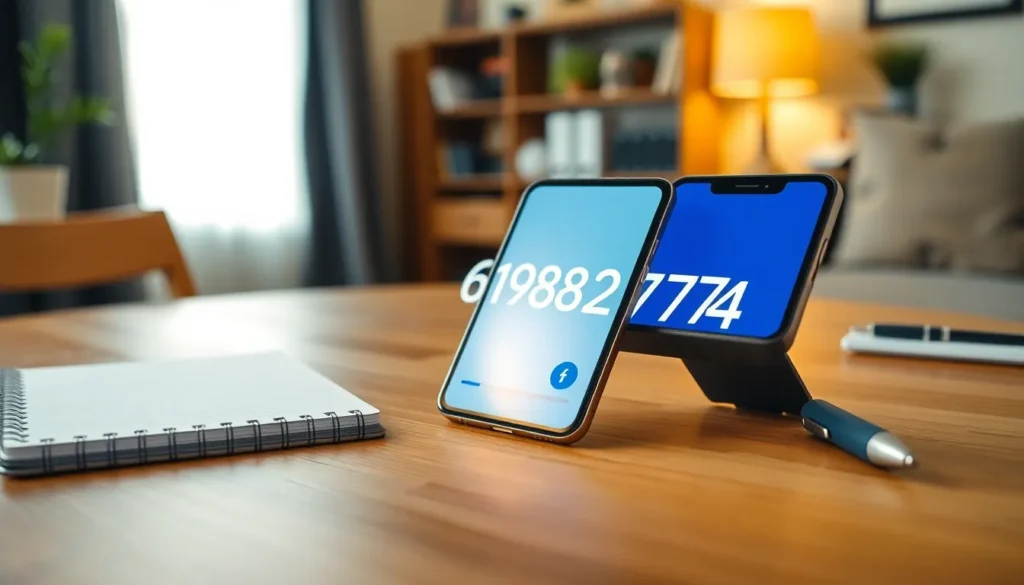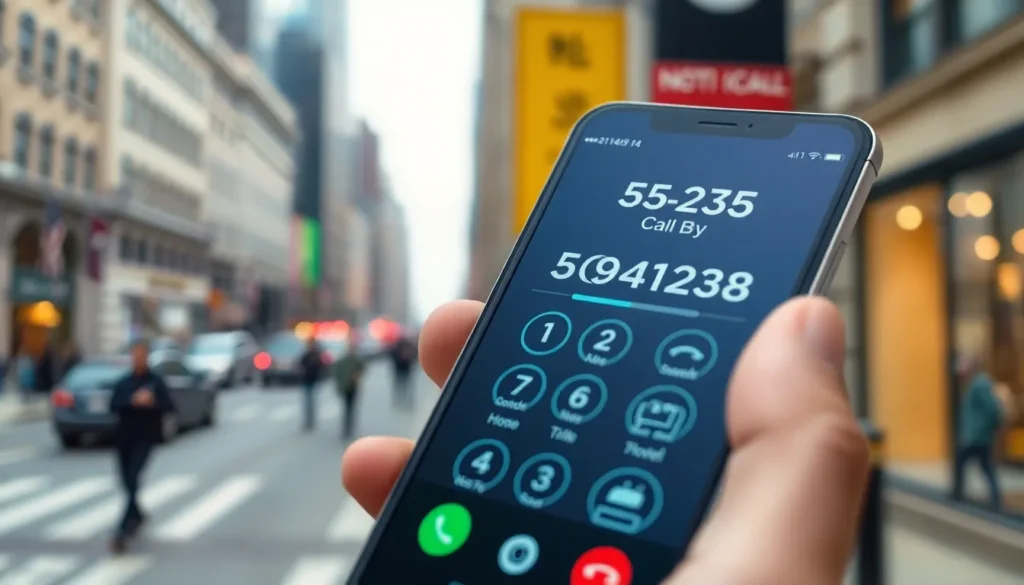Imagine this: your phone rings, and instead of the same old boring tone, your favorite jam blares through the speakers. Sounds good, right? Creating a custom ringtone on an iPhone using GarageBand is not just possible; it’s a fun little project that’ll make your phone stand out in a sea of generic sounds.
Table of Contents
ToggleOverview of Custom Ringtones
Creating custom ringtones allows users to express individuality and personalize their devices. GarageBand offers a user-friendly platform for crafting unique audio files, turning favorite songs or sounds into personalized ringtones. Users benefit from straightforward tools that help manipulate audio clips, making them suitable for ringtone use.
Custom ringtones can reflect personal tastes or significant memories. Individuals often choose specific tracks or soundbites that resonate with them. Whether it’s a beloved song, a memorable movie quote, or an ambient sound, the selection remains vast.
GarageBand facilitates a smooth process for adjusting audio lengths and trimming files to meet ringtone requirements. The app ensures users can control different audio elements, including pitch, tempo, and effects. Individuals can layer sounds or mix audio to achieve a tailored finish.
Creating a ringtone through GarageBand integrates seamlessly with an iPhone’s settings. Once the audio file is ready, users can export it directly to their devices. The simplicity of this step reinforces the appeal of creating custom ringtones.
This process opens avenues for creativity, enabling users to explore different sounds. Custom ringtones enhance user experience and can even spark conversations. Exploring this functionality can yield personalized touches to any iPhone, making it distinctly theirs.
Getting Started with GarageBand
Creating custom ringtones with GarageBand begins with the right setup. This user-friendly app enables easy manipulation of sound files for personalized audio experiences.
Downloading GarageBand
GarageBand is accessible via the App Store for free on iPhones and easily downloads to compatible iOS devices. He or she can search for “GarageBand” in the App Store, then tap the download button for quick installation. Ensure the device runs the latest iOS version for optimal performance. Once the download completes, the app appears on the home screen, ready for use in crafting ringtones.
Setting Up a New Project
Setting up a new project in GarageBand is straightforward. Users should open the app and select the “Create New Project” option. From the available project types, selecting “Audio” or “Voice” works best for custom ringtones. Afterward, users can name their project according to personal preference, allowing easy identification later on. Following this step, it’s essential to choose the desired audio format and tap “Create” to enter the editing interface, where creativity begins.
Creating Your Custom Ringtone
Creating a custom ringtone on your iPhone using GarageBand requires a few straightforward steps. Follow this guide to make the process as simple as possible.
Importing Audio Files
Importing audio files sets the foundation for your custom ringtone. Users begin by selecting the “Tracks” view within GarageBand. Clicking the “+” symbol adds a new track, then choosing “Audio” allows users to select from various sources. They can tap “Files” to access their music library or import audio directly from a cloud service. After locating the desired file, dragging it into the timeline streamlines editing. GarageBand supports multiple audio formats, making it versatile for any audio selection.
Editing Your Audio
Editing audio plays a crucial role in personalizing your ringtone. Users can tap on the audio track to highlight it, revealing options for trimming and adjusting. Selecting the “scissors” tool allows quick cuts, facilitating the removal of unwanted sections. Changing pitch and tempo adds further creativity, allowing for unique modifications. Users might incorporate effects like reverb or echo by selecting the desired track and exploring the effects menu. Experimenting with these options helps achieve a polished sound that reflects personal tastes.
Setting the Length of the Ringtone
Setting the length of the ringtone ensures it meets Apple’s requirements. Ringtones must be 30 seconds or less, so adjusting the track length is essential. Users can easily click and drag the end of the audio clip to shorten it. GarageBand displays the length in the toolbar, helping users monitor their progress. Previewing the selection by pressing the spacebar allows users to hear their edits before finalizing. Making adjustments here ensures the chosen piece fits perfectly as a ringtone, capturing memorable moments and favorite sounds.
Exporting Your Ringtone to iPhone
Exporting your custom ringtone to your iPhone is an essential step in personalizing your device. The process involves saving the audio file in the right format and transferring it efficiently.
Saving as a Ringtone Format
First, access the “My Songs” screen in GarageBand. Then tap and hold on your project until options appear. Select “Share” and choose “Ringtone” from the list. Customize the ringtone name to easily identify it later, ensuring it meets Apple’s limit of 30 seconds. After confirming the export, GarageBand saves the audio file in the correct format, making it ready for transfer. Finally, a message will confirm the successful export.
Transferring to iPhone via iCloud
Transferring the ringtone to the iPhone can happen through iCloud. On a computer, log into iCloud and access GarageBand’s folder. Upload the newly created ringtone to your iCloud Drive. Access the Files app on the iPhone, then navigate to iCloud Drive and find the ringtone file. Tap on the file to download it to your device. After downloading, the ringtone becomes available for setting in the iPhone’s settings. It’s a seamless way to ensure the custom ringtone is readily accessible on your device.
Alternative Methods for Ringtone Creation
Creating custom ringtones can also be done through various alternative methods beyond GarageBand. Users often explore different approaches to achieve unique audio for their devices.
Using Other Apps
Third-party apps provide an easy way to craft ringtones. Applications like Ringtone Maker or Zedge allow users to trim audio files and create ringtones directly from their music libraries. Users can download these apps from the App Store and follow simple instructions to select tracks. Features often include adjusting length and applying effects to enhance sound. Many of these apps support direct export to the iPhone, ensuring a seamless process.
Online Ringtone Makers
Online ringtone makers offer another convenient solution. Websites like RingtoneMaker.com let users upload audio files for quick editing. After uploading a favorite song, users can trim and modify the track before downloading it. Most services support common audio formats, making it easy to convert songs into ringtones. Users can upload directly to their iPhone through iCloud or use email to send the file for easy access.
Creating a custom ringtone on an iPhone with GarageBand is not only a fun project but also a great way to express individuality. With the app’s user-friendly features users can easily manipulate audio clips to reflect their personal tastes. Whether it’s a favorite song or a memorable quote the possibilities are endless.
The process of editing and exporting ringtones is seamless making it accessible for anyone interested in customizing their device. Additionally exploring alternative methods like third-party apps or online tools can further enhance the experience. Embracing these creative options allows users to enjoy a truly personalized iPhone that stands out from the crowd.










